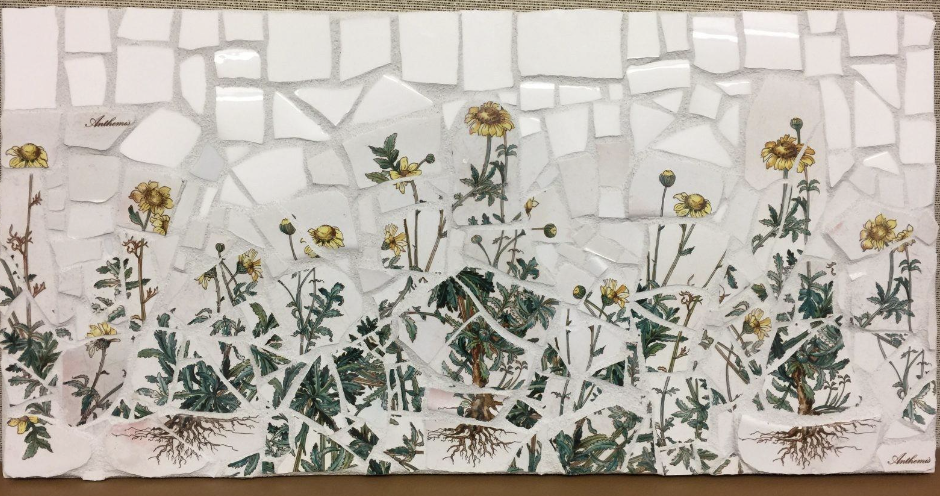Tawnya Lively, American
Alicia’s Flatware, 2017
After her home was destroyed by the October 2017 fires, artist Tawnya Lively launched the “Firestorm Mosaic Project”. Taking broken tiles, kitchenware, and other objects recovered from house fires and refashioning them into mosaics Lively hopes to create new heirlooms out of the ashes of the old. While this began as a personal work of art, Lively has expanded the project, creating images for others, coordinating mosaic artists to complete their own projects, and even “hosting workshops for those who would like to make their own projects”. These pieces tell of the momentous personal and human cost of wildfires, but still create a beautiful work of art that can allow the owners to both remember and move forward from the fires. Label by Caitlin Blomo
Alicia’s Flatware by Tawnya Lively consists of a single dining set that is framed by broken pieces of china of the same style as the half broken cup and burnt plate in the center. The fork and spoon are made of now damaged silver; all of the pieces were salvaged from ashes in California after a wildfire. The pieces together make a full dining set for one person to have a meal, but they are now tattered and unusable. This creates a microcosm of the number of homes and lives that were lost to these wildfires by displaying one set of lonely dishes as if to display a lost meal. Label by Jordan Stofko


